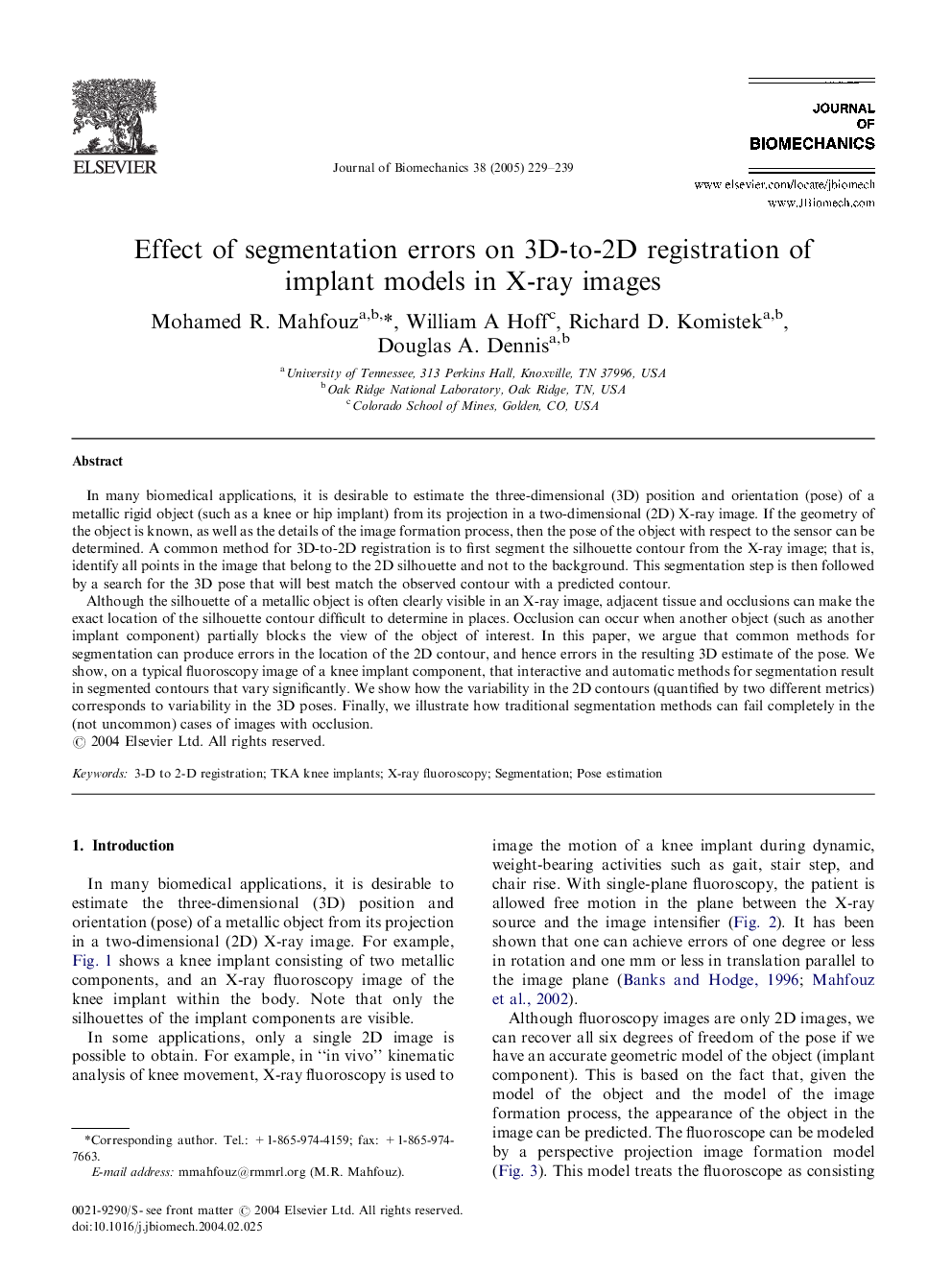| Article ID | Journal | Published Year | Pages | File Type |
|---|---|---|---|---|
| 10434515 | Journal of Biomechanics | 2005 | 11 Pages |
Abstract
Although the silhouette of a metallic object is often clearly visible in an X-ray image, adjacent tissue and occlusions can make the exact location of the silhouette contour difficult to determine in places. Occlusion can occur when another object (such as another implant component) partially blocks the view of the object of interest. In this paper, we argue that common methods for segmentation can produce errors in the location of the 2D contour, and hence errors in the resulting 3D estimate of the pose. We show, on a typical fluoroscopy image of a knee implant component, that interactive and automatic methods for segmentation result in segmented contours that vary significantly. We show how the variability in the 2D contours (quantified by two different metrics) corresponds to variability in the 3D poses. Finally, we illustrate how traditional segmentation methods can fail completely in the (not uncommon) cases of images with occlusion.
Related Topics
Physical Sciences and Engineering
Engineering
Biomedical Engineering
Authors
Mohamed R. Mahfouz, William A Hoff, Richard D. Komistek, Douglas A. Dennis,
